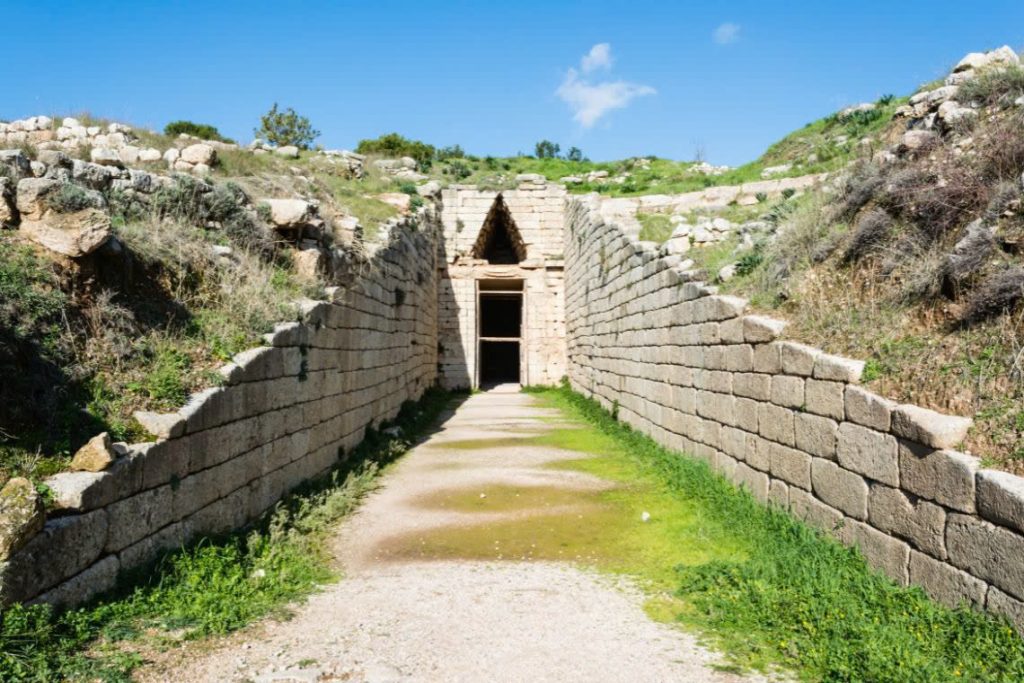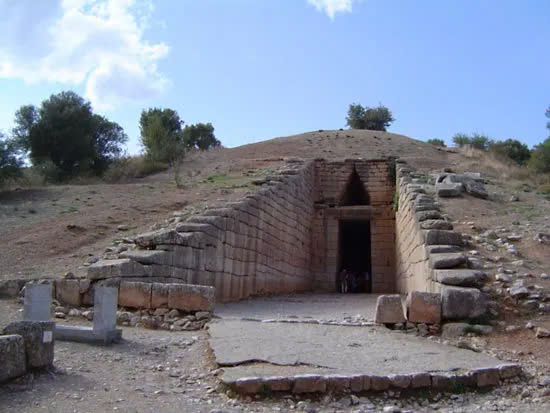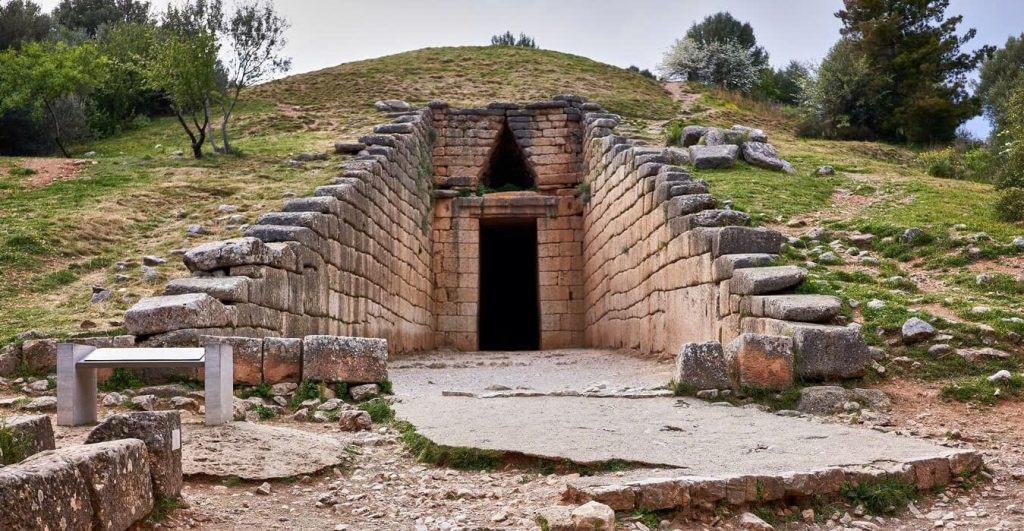Nestled in the heart of Mycenae, a UNESCO World Heritage Site, stands a breathtaking testament to the ingenuity and grandeur of ancient Greek civilization: the Treasury of Atreus. Often referred to as the Tomb of Agamemnon, this architectural masterpiece has captured the imagination of historians, archaeologists, and visitors alike for centuries. It serves as a monumental reminder of the brilliance of the Mycenaean people, inviting us to explore their artistry, engineering, and cultural achievements.
As you approach this ancient marvel, it is as though you are stepping back in time to 1250 BC. The long, stone-lined pathway, known as the dromos, stretches before you, leading to a grand façade that exudes both strength and elegance. Intricate carvings adorn the entrance, and above the massive doorway, a relieving triangle demonstrates the advanced engineering techniques employed by the Mycenaeans. This feature, designed to reduce pressure on the lintel, highlights the ingenuity of the era’s architects and builders.

The history of the Treasury of Atreus is steeped in mystery, with its origins intertwined with mythology and legend. Ancient Greek geographer Pausanias mentioned the site in his works, though he did not link it to the mythical figures of Atreus or Agamemnon. Over time, however, these legendary names became associated with the tomb, enriching its allure. This blend of historical fact and mythological fiction creates a compelling narrative that continues to intrigue scholars and enthusiasts to this day.
The 19th century marked the beginning of archaeological exploration at Mycenae, and the Treasury of Atreus quickly became a focal point of interest. Renowned archaeologist Heinrich Schliemann, famous for his discoveries at Troy, was among the first to study the site. Subsequent excavations throughout the 20th century uncovered a treasure trove of artifacts, shedding light on Mycenaean life, culture, and craftsmanship. These findings include pottery, tools, and decorative items that offer a vivid glimpse into the sophistication and creativity of this ancient civilization.
Stepping inside the Treasury of Atreus is an awe-inspiring experience. The tomb’s vast interior features a corbelled vault ceiling that soars to an astonishing height of 14.5 meters (nearly 48 feet). Known as a tholos, or beehive tomb, this architectural style represents a pinnacle of Mycenaean engineering and design. The precision with which the stones were arranged to create this dome-like structure is a testament to their mastery of geometry and construction techniques. Each stone was meticulously cut and placed to ensure stability and durability, allowing the structure to endure for over 3,000 years.
One of the most remarkable aspects of the Treasury of Atreus is the craftsmanship displayed in its construction. The walls are composed of ashlar masonry, a technique in which stones are precisely cut and fitted together without the use of mortar. This level of skill required an exceptional understanding of materials and construction methods, showcasing the Mycenaeans’ dedication to detail and their ability to achieve monumental feats of engineering.
While the true purpose and original occupant of the Treasury of Atreus remain a mystery, the structure itself speaks volumes about the values and priorities of the Mycenaean civilization. This tomb was not merely a burial site; it was a symbol of power, wealth, and artistic achievement. It likely played a significant role in rituals and ceremonies, serving as a bridge between the mortal and divine realms. As you stand within its massive chamber, it is easy to imagine the reverence and grandeur that once surrounded this ancient site.
The Treasury of Atreus is more than just an archaeological wonder; it is a connection to a bygone era. It invites us to ponder the lives of the people who built it, the skilled artisans who carved each stone, and the cultural significance it held for the Mycenaean community. The myths and stories that have grown around the tomb add an additional layer of fascination, blending historical reality with the imaginative power of human storytelling.

Today, the Treasury of Atreus continues to inspire and educate. It is a focal point for scholars, who seek to uncover more about Mycenaean society, and for visitors, who marvel at its scale and beauty. The structure serves as a reminder of the enduring power of human creativity and the remarkable achievements of our ancestors. It stands as a testament to a civilization that valued artistry, engineering, and the pursuit of excellence.
As you explore this ancient wonder, take a moment to let your imagination wander. Picture the bustling activity that once surrounded this site, the ceremonies that may have taken place within its walls, and the sense of awe it must have inspired in those who built and visited it. The Treasury of Atreus is a bridge across millennia, connecting us to the past and reminding us of the enduring legacy of human ingenuity.

For over 3,000 years, the Treasury of Atreus has stood as a symbol of the Mycenaean civilization at its peak. It continues to captivate all who encounter it, offering a glimpse into a world of artistic brilliance and engineering prowess. Whether you are a historian, an archaeologist, or simply a curious traveler, this remarkable structure provides an unforgettable journey through time. It challenges us to reflect on the achievements of those who came before us and inspires a sense of wonder at the enduring power of human creativity and ambition.





